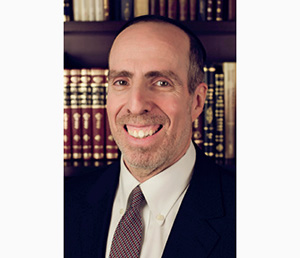
Many Ashkenazic Jews who visit Sephardic congregations comment that they are struck by the vitality and energy of Sephardic tefillah. There is no doubt that the Sephardic practice for one member to read every word aloud has a major impact on creating this special feeling. The special interactive nature of Sephardic prayer also contributes to the beautiful feeling at Sephardic tefillah.
Examples of Responses
Many of the examples of interactivity are well-known, such as the response “L’vracha” to the declarations of both “Mashiv HaRuach U‘Morid HaGeshem” and “Morid HaTal,” depending on the season. There are a considerable number of other examples, though not all of these responses are practiced by every Sephardic community.
These responses include stating “Aleihem Hashalom” after mentioning “Elokei Avraham, Elokei Yitzchak, V’Elokei Yaakov,” responding “B’karov” after the chazan says U’Matzmiach Yeshua, saying Baruch Chei Olamim after the leader says “V’chol Hachayim Yoducha Sela” and responding Amen to each section of the Elokeinu V’Elokei Avoteinu portion of the fourth bracha of the Shabbat and Yom Tov prayers. There are other responses depending on the type of Sephardic congregation one attends.
Explanations for the Responses
There is a compelling explanation for many or even most of these responses. For example, the L’vracha response to our mentioning rain and dew echoes the Mishna’s recounting of the saga of Choni the Circle Drawer’s plea for rain (Ta’anin 19a). Choni demanded “gishmei bracha” and not mere drizzle on the one hand or destructive flooding on the other. Elsewhere we have noted how Choni serves as a role model for Sephardic Jews. The Sephardic Selichot include a plea that just as Hashem answered Choni, He should answer us as well.
However, not every one of these responses requires explanation. Many of these responses, as explained by Rav Mordechai Lebhar, are intended simply to help keep the congregation focused on the service. Indeed, the Shulchan Aruch (Orach Chaim 424:4) rules that one must concentrate on the brachot of the shaliach tzibbur to answer Baruch Hu Uvaruch Shemo and Amen. If there are not nine people concentrating on these brachot, we cause the chazan to be saying unnecessary brachot. Therefore, for the congregation to remain focused and have more concentration, these phrases are added.
Increasing the Energy and Positive Vibe at the Synagogue
I submit that there are two other sources for this Sephardic practice. The Gemara (Brachot 45a) presents the pasuk “Gadlu laHashem iti u’neromemah Shemo yachdav” as the source for the bracha of zimun (the introduction to the Birkat HaMazon said when at least three men eat bread together). It also presents the pasuk “Ki Shem Hashem ekra havu godel l’Elokeinu” as an alternative source for this practice.
Both of these pesukim articulate the idea of collaboratively praising Hashem. The congregation is not competing with each other, but rather working together to honor Hashem, in the manner of the malachim (angels) who are described as “not’nim reshut zeh lazeh.” The repetition of the Amida (the chazara) should not be perceived as the exclusive effort of the shaliach tzibur (prayer leader). The frequent responses not only maintain the congregation’s attention but also their participation so that the chazara should be a collective effort rather than the toil of just one individual.
To Energize and Enliven the Entire Azarah (Temple Courtyard)
There is another aspect to this Sephardic practice based on the Gemara’s explanation of certain practices in the Beit HaMikdash. The Gemara (Yoma 24b) states:
The Mishna states that there were four lotteries held in the Temple every day. One of the Sages asked: Why did they assemble all the priests together and hold a lottery, and once again gather them together to hold another lottery, four times, when the priests could be gathered one time and all the necessary lotteries held at that time?
Rabi Yocḥanan said: It was done this way in order to create a commotion throughout the Temple courtyard, as the priests would converge from all over to assemble there, as it is stated: “We took sweet counsel together, in the House of God we walked with the throng” (Psalms 55:15). This verse teaches that it is proper to stir up a commotion and to cause public excitement in the course of the Temple services.
Similarly, the Gemara (Yoma 33b) records:
Why does the priest remove the ashes from five lamps of the candelabrum and then return and remove the ashes from two lamps of the candelabrum rather than arrange all seven lamps at once? It is in order to enliven those present in the entire Temple courtyard.
The responsive nature of Sephardic prayer, as we have described, is intended not only to maintain the attention of the congregation. The goal is also to create an exciting service, which in turn generates exhilaration and thrill to the service.
Conclusion
I submit that a major reason why a much higher percentage of Sephardic Jews maintain a loyalty to their heritage than Ashkenazic Jews is the vibrant and interactive character of Sephardic services. For example, many not-yet fully observant Sephardic Jews of all ages throng to Selichot due to the very enjoyable high energy and interactive nature of Sephardic Selichot. They also are written in straightforward Hebrew that is much easier to understand than the Ashkenazic Selichot, which consist to a great extent of the cryptic poems of Rabi Eliezer HaKalir.
The more energetic Sephardic tefillah, while not quite as somber and solemn as the Ashkenazic rite, is a very attractive model of tefillah that has succeeded in maintaining a deep loyalty among most Sephardic Jews. There are critical lessons for all Jews to derive from this Sephardic prayer experience.
By Rabbi Haim Jachter
Rabbi Haim Jachter is the spiritual leader of Congregation Shaarei Orah, the Sephardic Congregation of Teaneck. He also serves as a rebbe at Torah Academy of Bergen County and a dayan on the Beth Din of Elizabeth.













